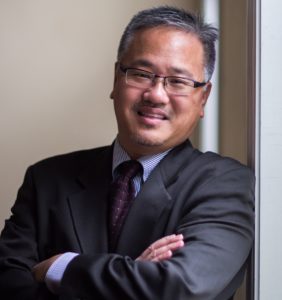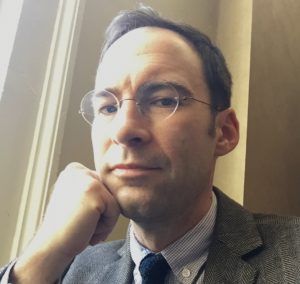scaffolding learning
Select an item by clicking its checkbox
I’ve been doing some nonfiction creative writing recently (you can see my latest piece here, if you’d like). And it’s been an interesting exercise in curation, a term most closely associated with the world of art history, but now used all over the place. When writing about ...
I titled this post after Trevor Noah’s introduction to the Black Panther film at the 2019 Oscars when he cited the Xhosa proverb, “Abelungu abazi uba ndiyaxoka.” Trevor translated it to mean: “'In times like these, we are stronger when we fight together than when we try to fight apart.” ...

Handbook for Higher Education Faculty: A Framework & Principles for Success in Teaching
Date Reviewed: September 13, 2017
As a second year professor at a graduate institution of higher education, David Garrett Way’s Handbook for Higher Education Faculty: A Framework and Principles for Success in Teaching helps me understand my role as a faculty member in higher education. Way’s work synthesizes his forty years of teaching experience with the hope that he can help beginning educators with practical teaching knowledge (6). Way’s goals are to prepare his readers to accomplish a multitude of tasks. First, readers will be able to successfully execute their teaching plans in and out of the classroom. Second, educators will encourage deep and lasting learning in students. Third, educators will effectively assess learning as an authentic process while also documenting all efforts throughout their career. Finally, educators will be prepared to be evaluated by others (13).
Way puts forth his plan in seven well-executed chapters. In Chapter 1, “Teaching and Identity” (15), Way uses the maxim that teaching is to lecturing as being is to doing. Teaching is a larger concept than lecturing and being is a larger concept than doing. The integration of all of these concepts is conversation. Since teaching is about generating conversations, Way proposes that we must understand who we are as beings living in specific identities. While thinking through some teaching techniques such as “warming up” (25) and “think-pair-share” (26), Way uses these concepts to help educators take inventory of their own individual styles and evolving personal theory while putting conversations with students into practice.
Chapter 2, “Reflection and Teaching,” examines the dialogue that educators have between their “Espoused Theory” and their “Theory-in-Use” (32). In essence, Way believes that as educators, we must approach our pedagogy with a theory that we want to embrace (such as fostering dialogue) while being aware when our espoused theory goes awry (such as dominating class time with lecture, thereby squelching dialogue.) In essence, our thinking around our teaching takes continuous time and reflection.
Chapter 3, “The Role of Higher Education in Society” (45), asks one of the most important questions in Way’s work: “(w)hat risks will you be willing to make in your career to remain true to your strongly held values?” (54). Assuming that the humanities and sciences must both engage with society for the betterment of society, Way does not want educators waking up twenty years into a career and asking “How did I get here? Why am I doing these things?” (55).
In Chapter 4, “Preparing to Teach” (57), Way thinks through the macro and micro dimensions of prep work in overall course design and individual class sessions. Reviewing best practices in macro and micro design, Way argues that backwards course design (a concept borrowed from engineering) prompts an educator to begin by deciding what students must accomplish by the course’s end. I found the example of Cornell’s James Maas’s use of varying the stimulus very enlightening. Varying the stimulus in his case means recognizing that the average person’s attention span starts to drift after 10-15 minutes (67). Accordingly, Maas may lecture for ten minutes on an abstract concept and then move to a concrete activity for students to engage.
In Chapter 5, “Creating Effective Learning Experiences” (71), Way examines how educators can plan and execute plans to the point that students desire meaningful and sustained learning that is “transforming, sustained, emotionally charged, surprising, painful, empowering, and fulfilling” (72-73). Way argues that an effective learning experience is a “kind of space – physical, emotional, psychological, intellectual and even spiritual” (73). In Way’s experience, role-playing and simulation are two methods that accomplish this.
Student assessment occurs over time while evaluation is the final cumulative process of assessment. Chapter 6, “Assessing Student Learning and Providing Effective Feedback” (87), provides principles for planning, assessment, rubric development, and peer evaluation. Way concludes his book with Chapter 7, “Professional Development: Document and Measuring Progress” (105), as the culminating push for teachers in higher education to begin accumulating documents and engaging in events that provide a framework for modeling pedagogical growth.
While I thoroughly enjoyed reading and pondering deeply my own pedagogical frameworks, principles, and early experiences in teaching, I was left wondering if there could be a follow up to Way’s text that addresses the gendered nature of teaching. A recent study on student evaluations (“Student Evaluations of Teaching [Mostly] Do Not Measure Teaching Effectiveness” by Anne Boring, Kellie Ottoboni, and Philip Stark) suggests that student evaluations are systematically biased against women. As an African American female professor in higher education, I have already felt the ways gender impacts teaching identity in my own educational experiences. I wonder if there are specific tools, frameworks, and principles that provide female faculty and faculty of color a blueprint for pedagogical success.
Notwithstanding this, I enjoyed reviewing this important work that is crucial for early career faculty.
This blog builds on Caleb Elfenbein’s excellent post in this series “Scaffolding Theory at the Introductory Level.” I want to think about two interconnected issues in relation to engaging theoretical discussions in the study of Religion and the Humanities in an introductory course on Islam: 1) cultivating a practice of ...
More often than not, it seems, students register for courses on Islam wanting to learn “stuff.” In a moment when the ubiquity of Islam in public consciousness is matched by general illiteracy about its history and diverse forms, these expectations are tempting. Yet if we don’t spend time really ...



